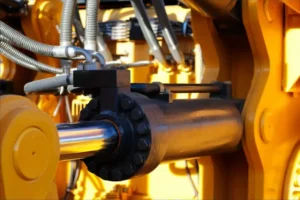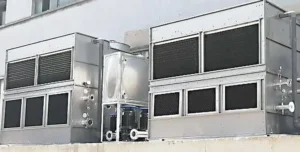يعد ذوبان الحديد عملية أساسية في صناعات تشغيل المعادن والمسبك, playing a crucial role in the production of castings, alloys, and steel products. Understanding the principles behind iron melting is essential for achieving high-quality outputs, ensuring efficiency, and minimizing material waste. This article explores the process of iron melting, its applications, and the factors influencing its efficiency.
What Is Iron Melting?
Iron melting is the process of heating iron to its molten state in a furnace, where it can be poured into molds to create castings or alloyed with other metals. The melting point of iron is typically around 1,150°C (2,102درجة فهرنهايت), but the process may vary depending on the type of iron being melted (على سبيل المثال, الحديد الزهر, pig iron, or wrought iron) and the alloying elements.
Types of Iron and Their Melting Points
The different types of iron have varying melting points, which directly impact the melting process:
- Pig Iron: This is the first stage of iron after it has been extracted from iron ore in a blast furnace. Pig iron has a melting point of around 1,150°C to 1,200°C (2,102°F to 2,192°F). It contains high amounts of carbon (typically 3–4%) and is brittle in its raw form.
- Cast Iron: Cast iron, derived from pig iron, contains between 2% ل 4% الكربون, making it more fluid than pig iron at the same temperature, with a melting point of 1,150°C (2,102درجة فهرنهايت). It is typically used in manufacturing heavy-duty components, الآلات, and engines.
- Wrought Iron: This is iron that has been refined to remove most of its carbon content. It has a melting point of around 1,530°C (2,786درجة فهرنهايت) and is used in applications requiring greater strength and ductility.
Furnaces Used for Iron Melting
Iron melting is done in various types of furnaces, each suited to specific applications based on the scale of production, type of iron, and energy source. The three primary types of furnaces used for iron melting are:
فرن الانفجار
Blast furnaces are used for the large-scale production of pig iron. They operate at high temperatures and are fed with iron ore, فحم الكوك, and limestone. The process involves the reduction of iron ore (Fe2O3 or Fe3O4) into molten iron using carbon from coke. The blast furnace is ideal for continuous iron production on an industrial scale.
فرن الحث
Induction furnaces are widely used for smaller batches and more refined iron melting. They work by generating an electromagnetic field to heat and melt the iron. Induction furnaces offer high efficiency and precise temperature control, making them ideal for applications like alloy production, إعادة التدوير, and custom casting.
فرن القبة
The cupola furnace is a common melting furnace used in foundries for melting cast iron. It is a vertical shaft furnace that is continuously charged with metal scrap, فحم الكوك, and flux. Once the charge is melted, the molten iron is tapped at the bottom of the furnace and poured into molds.
The Iron Melting Process
The iron melting process involves several steps, from loading the furnace to casting the molten iron into molds. Here’s an overview of the key stages:
1. Loading the Furnace
The furnace is charged with the raw materials (iron scrap, pig iron, or iron ore) and additional elements such as flux or alloying materials. For induction and cupola furnaces, the materials are usually fed in small batches, while blast furnaces use continuous charging.
2. Heating and Melting
Once the furnace is loaded, it is heated to the required temperature. In the case of induction furnaces, the material is heated using electromagnetic fields, while in blast furnaces, combustion reactions occur. As the temperature rises, the iron begins to melt and form a molten pool at the bottom of the furnace.
3. Skimming and Purification
During melting, impurities such as sulfur, السيليكون, and carbon can be removed from the molten iron. Skimming is the process of removing slag (a byproduct of impurities) that floats on top of the molten iron. This step is crucial for ensuring the quality of the final product.
4. Pouring and Casting
Once the iron reaches the desired temperature and is free of impurities, it is poured into molds or ladles. The casting process involves shaping the molten iron into the desired form, whether it’s a casting for machinery parts or a component for an alloy.
Factors Affecting Iron Melting Efficiency
Several factors can influence the efficiency of the iron melting process:
1.Furnace Type
The type of furnace used plays a significant role in determining the speed, استهلاك الطاقة, and overall effectiveness of the melting process. Induction furnaces are generally more energy-efficient than blast furnaces, but they are also better suited for small to medium-scale operations.
2.مادة الشحن
The type and quality of the materials charged into the furnace can impact the time it takes to melt the iron and the quality of the molten product. Higher-grade scrap iron and pig iron melt faster and yield cleaner results.
3.التحكم في درجة الحرارة
Maintaining the correct temperature is crucial in the iron melting process. If the temperature is too low, the iron may not melt completely, leading to incomplete or poor-quality castings. On the other hand, excessive heat can lead to excessive oxidation, causing loss of material and reducing the strength of the iron.
4.طاقة Source
The source of energy used in the furnace (على سبيل المثال, كهرباء, الغاز الطبيعي, or coke) can also affect the melting process. Electricity-based induction furnaces tend to be more energy-efficient, while coke-fueled furnaces (blast and cupola) require more energy and produce higher CO2 emissions.
Applications of Iron Melting
Iron melting is used in a wide range of industries for various applications, مشتمل:
- Foundry Industry: The production of cast iron components such as engine blocks, أنابيب, and heavy machinery parts.
- Steel Manufacturing: Iron is melted and refined to produce steel, which is essential for construction, السيارات, and infrastructure industries.
- إعادة التدوير: Scrap iron and steel can be melted and reused to create new products, making iron melting an important process for sustainability.
Challenges in Iron Melting
Iron melting is not without its challenges. Common issues include:
- استهلاك الطاقة: Melting iron requires substantial energy, particularly in large-scale operations. The efficiency of the furnace and the energy source can significantly impact operational costs.
- Pollution: Iron melting, especially in blast and cupola furnaces, produces greenhouse gases and particulate matter. Environmental concerns have led to the development of more sustainable and cleaner melting technologies.
- Material Quality: Impurities in scrap metal or iron ore can lead to defects in the final product. Ensuring high-quality raw materials and efficient slag removal is crucial for producing high-grade iron.
خاتمة
Iron melting is a critical process in the production of castings, alloys, and steel products. With advancements in furnace technology, كفاءة الطاقة, and material handling, the iron melting process has become more precise and environmentally friendly. Understanding the different types of furnaces, the steps involved, and the challenges faced can help manufacturers improve production efficiency, reduce waste, and achieve better quality in their iron products. As industries continue to evolve, iron melting will remain at the heart of metalworking, contributing to a wide array of industrial applications.







